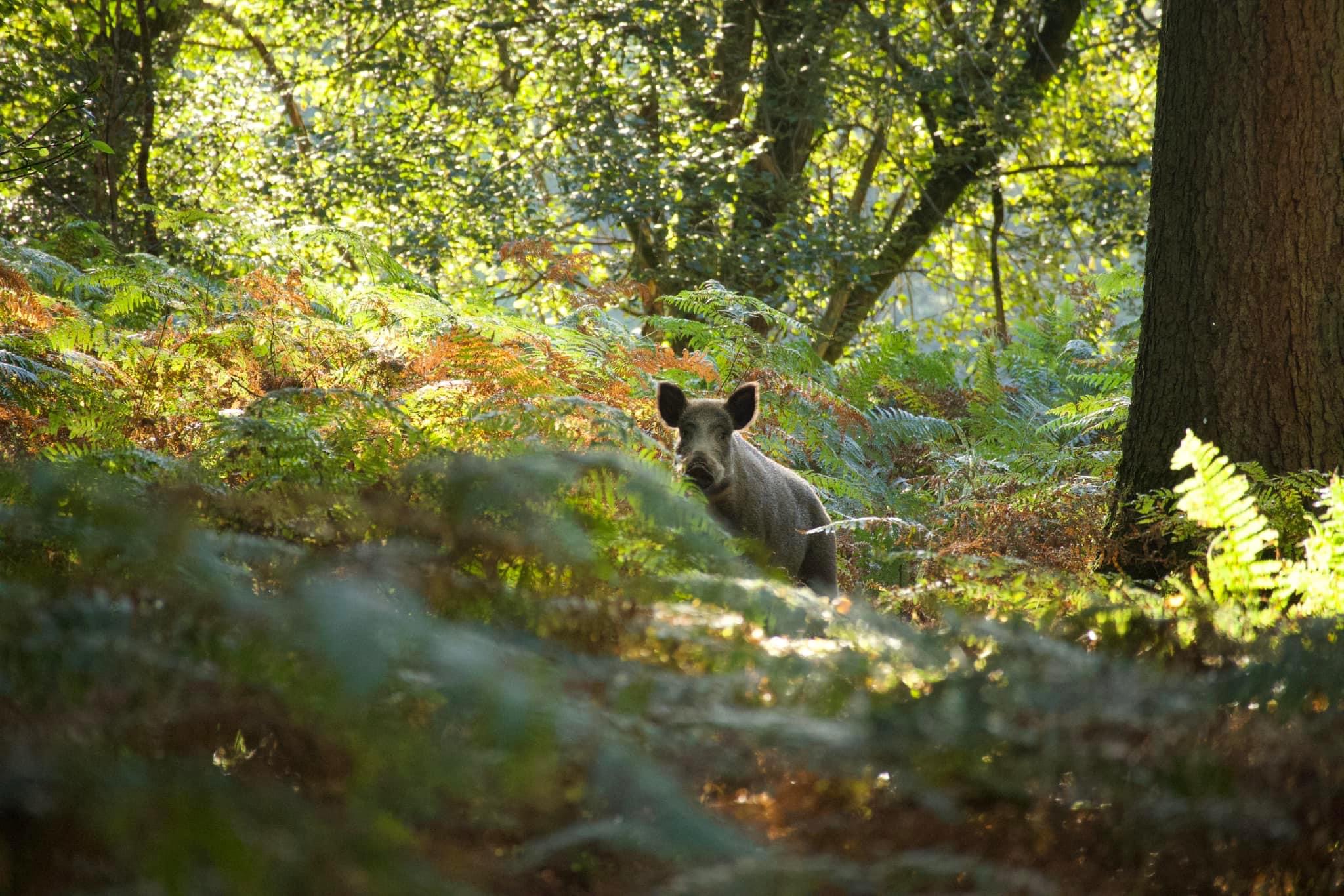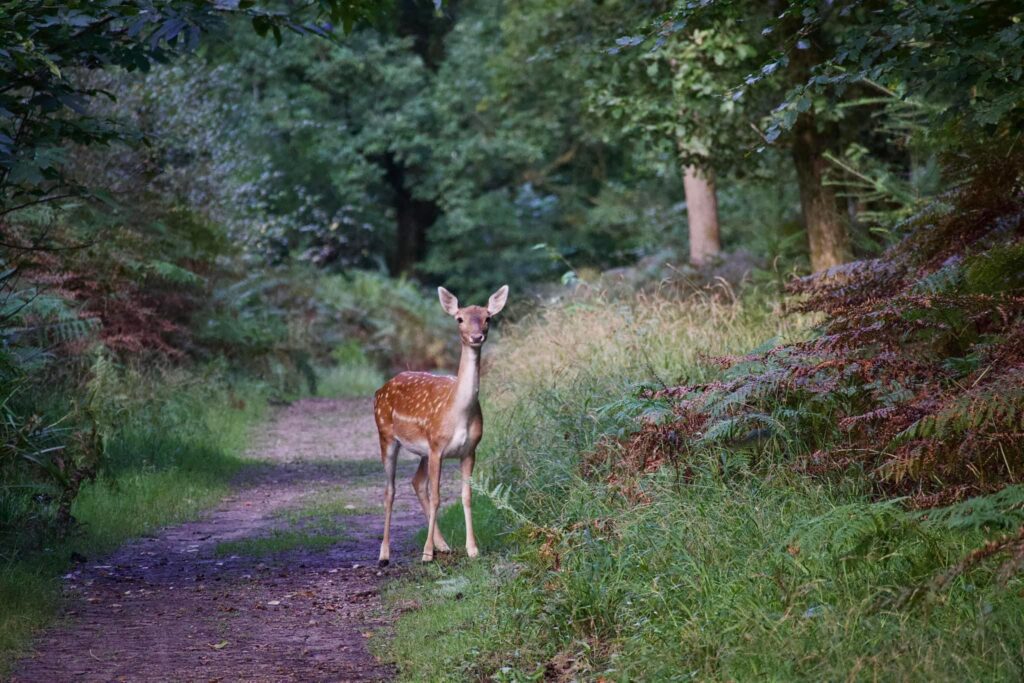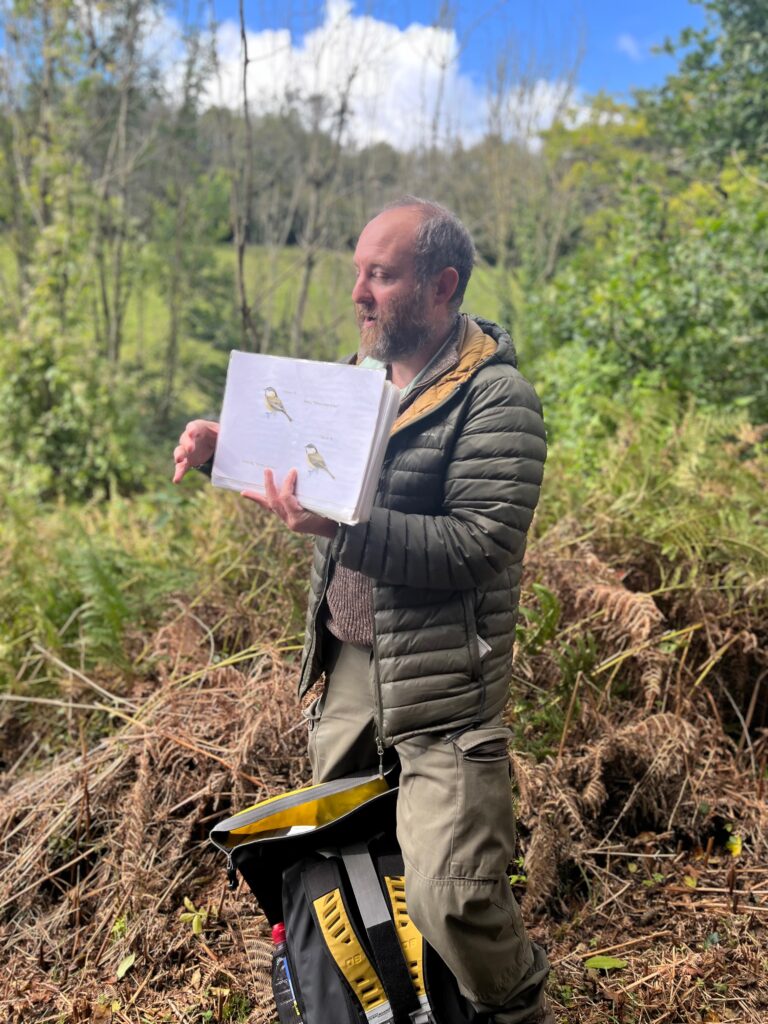There’s something truly special about the Forest of Dean. As the seasons change, this ancient woodland transforms, offering a different experience each time you visit. Spring brings carpets of bluebells and the calls of returning migratory birds, while autumn cloaks the forest in rich hues of gold and russet. Whether you’re hoping to glimpse a majestic fallow deer at dawn or catch sight of a peregrine falcon soaring above Symonds Yat, the forest never fails to deliver moments of magic.
A thriving woodland ecosystem

The Forest of Dean is home to an incredible variety of wildlife. Over 20 million trees, many ancient oak, support countless insects, birds, and mammals. Each oak can provide shelter and food for up to 300 insect species, making them a vital part of the forest’s ecosystem.
Spring is a fantastic time to visit, as bluebells and wild daffodils carpet the woodland floor, particularly in the Dymock region. Summer brings butterflies flitting through sun-dappled glades, while autumn offers the best chances of spotting deer as they prepare for winter.
Wildlife highlights at a glance:
| Feature | Highlights |
| Butterflies | 30+ species |
| Oak tree ecosystems | Hosts up to 300 insect species per tree |
| Deer species | Fallow, roe, and muntjac |
| Seasonal flora | Spring bluebells, wild daffodils, winter snowdrops |
Wildlife to spot in the Forest of Dean
Birds to watch for
With its mix of ancient woodland, open glades, and meandering rivers, the Forest of Dean is a birdwatcher’s dream. The RSPB Nagshead Nature Reserve is a must-visit in spring when pied flycatchers and redstarts return to their nest. During winter, the forest’s quiet stillness is punctuated by the calls of goshawks and treecreepers.
Yat Rock is one of the best locations for those eager to see birds of prey. Between April and August, peregrine falcons nest on the cliffs while buzzards and red kites glide effortlessly overhead.
Other birdwatching hotspots include:
- Highnam Woods Nature Reserve – Known for its nightingales alongside birds such as song thrushes, warblers and woodpeckers.
- Cannop Ponds – Home to little grebes, mandarin ducks and kingfishers.
- RSPB Nagshead – Offers excellent chances to see pied flycatchers, redstarts and nuthatches. warblers, crossbills, and nuthatches.
- Woorgreens Lake and Nature Reserve – The heathland habitat for specialist birds, reptiles and butterflies.
The forest’s deer population
If you tread quietly at dawn or dusk, you might catch sight of a fallow, roe, or muntjac deer moving through the trees. The best places to spot them are in the quieter forest areas, such as Lydney Park Estate or the woodland trails near Speech House.
The elusive wild boars
Wild boars have become one of the Forest of Dean’s most talked-about inhabitants. Once extinct in the UK, they were reintroduced to the area in 2004 and thrived. While they are generally shy, lucky visitors might spot a family foraging in the undergrowth, especially in the early morning or late evening.
The best birdwatching trails
Spring is one of the best times for birdwatching in the Forest of Dean, with trails winding through some of the region’s richest habitats.
| Location | Length | Birdlife highlights |
| RSPB Highnam Woods | Varies | Nightingales, Woodpeckers |
| Forest of Dean Sculpture Trail | 7.6 km | Art installations, birdwatching |
| Gloucestershire Way Stage 2 | 22.7 km | Diverse wildlife, high elevation |
| Woorgreens Lake | 3.2 KM | A wide range of plants and animals, Waterfowl |
Wildlife through the seasons

Every season in the Forest of Dean brings something different to discover.
- Spring: Woodpeckers drum in the trees, bluebells bloom and deer are most active.
- Summer: Migrant birds nest, butterflies flutter through sunlit clearings, and dragonflies hover over ponds.
- Autumn: The forest is filled with a riot of colour as deer prepare for the rut and woodland birds are easier to spot.
- Winter: The bare trees make it easier to see wildlife, including flocks of siskins and the occasional wild boar.
Wildlife safaris with expert guides
Consider joining a guided safari for a deeper insight into the forest’s wildlife. Naturalist Ed Drewitt leads expert-led walks, helping visitors identify birds by their calls and track elusive creatures through the trees. His dawn chorus walks are a particular highlight, offering the chance to hear the forest wake up in a spectacular soundscape of birdsong.
Key safari experiences:
- Diverse habitats – Explore a mix of woodland, heathland and riverside trails.
- Expert knowledge – Learn about bird calls, animal tracks and forest ecology.
- Seasonal highlights – Tailored experiences based on the time of year.
Family-friendly wildlife activities
There’s plenty for families to enjoy in the Forest of Dean, from magical woodland walks to hands-on nature experiences.
- Foraging and bushcraft – Learn to identify edible plants and essential survival skills.
- Puzzlewood – This enchanting, moss-covered woodland is said to have inspired J.R.R. Tolkien’s forests in The Lord of the Rings.
- Perrygrove Railway – A scenic train ride through the forest, perfect for younger visitors.
For something extra special, families can join an evening wildlife walk. As the sun sets, children can search for bats, owls and even wild boars.
Conservation in the Forest of Dean
Conservation efforts play a huge role in preserving the Forest of Dean’s wildlife for future generations. Several key projects have helped restore balance to the ecosystem:
- Beaver reintroduction – Introduced in 2018 to aid natural flood management.
- Pine martens – Were brought back to the area in 2019 as part of a national conservation effort.
- Exmoor ponies and cattle grazing – Helping to maintain heathland biodiversity.
These projects ensure the forest remains a thriving habitat for diverse species.
Planning your visit
Whether you’re visiting for a day or a weekend, a little preparation will help you make the most of your time in the forest.
What to bring
✔️ Binoculars – Essential for birdwatching and wildlife spotting.
✔️Sturdy footwear – Paths can be muddy, so walking boots or wellies are necessary.
✔️Layers – The British weather can be unpredictable.
✔️A camera – You’ll want to capture the stunning scenery.
When to visit
| Month | Wildlife highlight |
| March | Wild daffodils and early bird arrivals |
| April | Peak migratory bird season |
| May | Bluebell bloom and thriving birdlife |
No matter when you visit, the Forest of Dean promises unforgettable encounters with nature. So, grab your walking boots, pack your binoculars, and adventure through one of Britain’s most beautiful and wildlife-rich landscapes.

